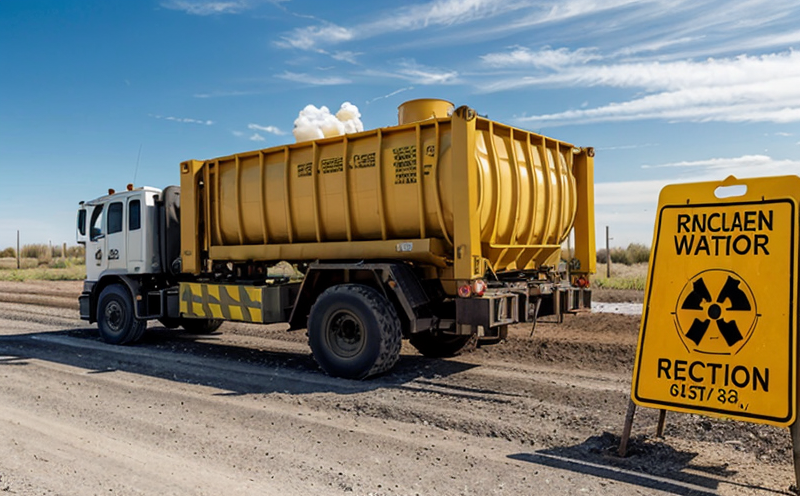IAEA GSG-1 Classification of Radioactive Waste
The International Atomic Energy Agency (IAEA) Guide for the Safe Management of Spent Fuel and Radioactive Waste, GSR Part 1 (GSG-1), provides a robust framework for classifying radioactive waste. This classification is crucial for ensuring the safe management and disposal of radioactive materials across various sectors including nuclear energy generation, medical facilities, and scientific research.
The IAEA's approach to waste classification focuses on several key parameters that determine the type and treatment requirements of the waste:
- Radioactive content
- Volume and mass
- Physical form
- Potential for dispersal or migration
- Associated hazards
The classification system is designed to facilitate consistent, internationally recognized practices in waste management. It ensures that all stakeholders—operators, regulators, and disposal facilities—are working from the same set of guidelines.
The process begins with the collection of data on the waste’s characteristics. This data includes:
- Isotopic composition
- Hazardous properties
- Volume and mass
- Potential for dispersal or migration
- Degradation and stability in different environments
The IAEA GSG-1 also provides detailed guidance on the methodologies used to classify waste. These include:
- Assessment of radiological hazard levels
- Evaluation of potential for release into the environment
- Determination of stability under various conditions
The classification process is not static; it evolves as new data becomes available and technologies advance. This dynamic approach ensures that the safest, most effective management practices are continuously applied.
One of the key benefits of adhering to IAEA GSG-1 is compliance with international standards. This compliance is essential for operators seeking to meet regulatory requirements and ensure public safety. Compliance also facilitates smoother interactions between different entities involved in waste management, from generation to disposal.
| Waste Classification Criteria | Description |
|---|---|
| Isotopic Composition | Type and concentration of radioactive isotopes present |
| Hazardous Properties | Potential for chemical or biological hazards |
| Volume and Mass | Total volume and mass of the waste material |
| Potential for Dispersal/Migration | Risk of release into the environment |
| Degradation/Stability | Stability under various conditions |
The classification system is designed to be flexible, allowing for adjustments based on new data or technological advancements. This ensures that the safest, most effective management practices are continuously applied.
By using IAEA GSG-1, stakeholders can ensure consistency and accuracy in waste classification. This leads to more efficient waste management processes and safer disposal methods.
Benefits
The benefits of adhering to the IAEA GSG-1 Classification for Radioactive Waste are manifold, including:
- Enhanced safety through consistent classification practices
- Facilitation of international cooperation and compliance with global standards
- Improved efficiency in waste management processes
- Increased confidence among stakeholders regarding the safe handling of radioactive materials
- Support for regulatory compliance, which is crucial in many sectors
- Promotion of responsible practices that minimize environmental impact
- Facilitation of smoother interactions between different entities involved in waste management
The standardization provided by the IAEA GSG-1 helps ensure that all parties are working from the same set of guidelines, leading to more coordinated and effective waste management.
In summary, adherence to the IAEA GSG-1 Classification not only ensures compliance with international standards but also contributes significantly to public safety and environmental protection.
Industry Applications
| Industry | Applications of IAEA GSG-1 Classification |
|---|---|
| Nuclear Energy Generation | Classification and management of spent fuel, reactor waste, and decommissioning materials. |
| Medical Facilities | Safe handling and disposal of radioactive medical waste from diagnostic and therapeutic procedures. |
| Scientific Research | Management of research waste generated from experiments involving radioactive materials. |
| Environmental Cleanup | Classification and treatment of contaminated soil, water, and other media during environmental remediation projects. |
- Spent fuel management in nuclear reactors
- Medical waste from diagnostic and therapeutic procedures
- Research waste from radioactive experiments
- Environmental remediation of contaminated sites
The IAEA GSG-1 Classification system is applicable across a wide range of industries where radioactive materials are used or produced. Its application ensures that all stakeholders, from operators to regulatory bodies, can work towards the safe and responsible management of these materials.
Competitive Advantage and Market Impact
Adhering to the IAEA GSG-1 Classification provides significant competitive advantages in the market for waste management services. By ensuring compliance with international standards, operators can:
- Demonstrate a commitment to safety and environmental responsibility.
- Avoid legal penalties associated with non-compliance.
- Build trust with stakeholders, including regulatory bodies and the general public.
- Operate more efficiently by streamlining waste management processes.
The global nature of the nuclear industry means that adherence to international standards is essential for operators seeking to expand their reach. Compliance also opens doors to new markets where stringent regulations are in place.
In addition to these direct benefits, adherence to IAEA GSG-1 can contribute to a company's reputation as a leader in responsible waste management practices. This reputation can be a significant differentiator in a competitive market and can lead to increased business opportunities and partnerships.





